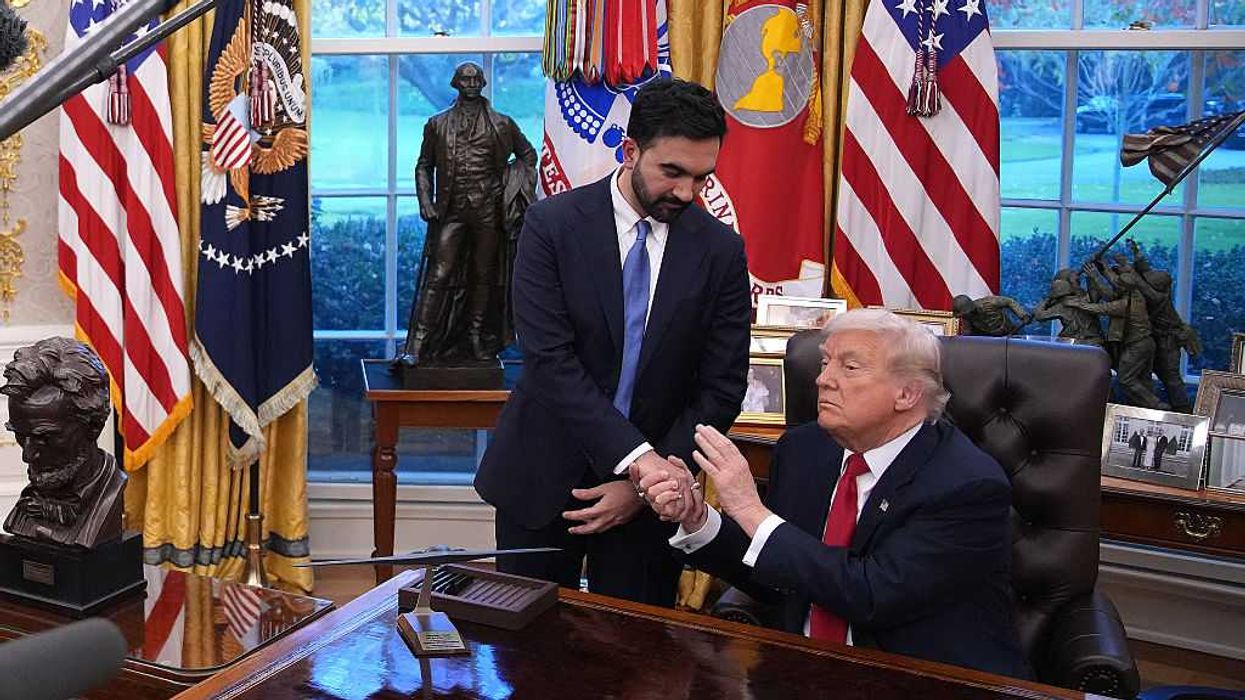Burgess is a distinguished professor of political science at Ohio University, a senior professional lecturer at DePaul University and a public voices fellow of The OpEd Project.
For the first time, the United States has been added to the list of backsliding democracies. And majority of young people no longer believe that they will do better than their parents, a key indicator of faith in the American dream.
Few may doubt that the United States is in one of the darkest, most challenging times in its political history, one rife with cynicism and pessimism. Fourteen months after the election, many in the Republican Party still do not accept that Joe Biden won the presidential election of 2020.
But history shows that politics change, sometimes beyond expectations. Fewer than 10 years ago, few may have thought that American democracy would be as imperiled as it is now. Likewise, positive political shifts that were once hard to imagine have become widely accepted, including the abolition of slavery, universal adult suffrage, minimum wage and maximum hours laws, easy access to birth control, and marriage equality for gays and lesbians.
Time and again, politics has changed in unlikely directions, sometimes resulting in heartening new political horizons.
In American politics, long periods of political order and stability are regularly followed by shorter bursts of significant political change. There have been six great political realignments in the history of American politics, and they have typically occurred during major crises such as the Great Depression or the Civil War.
Recognized realignments include the election of Thomas Jefferson in 1800, which reversed a trend of growing national power and higher taxes that had dominated politics since the founding of the nation. Andrew Jackson’s election in 1828 led to universal suffrage for white males, increasing the electorate substantially.
Abraham Lincoln’s victory in 1860 led to the abolition of slavery, and national power again became dominant when the Union prevailed over the Confederacy in the Civil War. Following William McKinley’s win in 1896, progressive reforms such as the federal income tax and antitrust laws were instituted to address a growing wealth gap.
Franklin Delano Roosevelt’s election in 1932 led the national government to regulate the economy, creating a vast web of New Deal programs that established for the first time a social safety net for people devastated by the Great Depression. The funding for many of those programs was slashed and national power was devolved back to state and local governments after Ronald Reagan’s landslide victory in 1980.
Adjustments in political times recur every 40 years or so in U.S. politics, and it is long overdue. The periods prior to realignment are typically quite politically unstable and politically divisive. For example, mob violence between pro and anti-slavery forces broke out prior to Lincoln’s election in a series of incidents known as “ Bleeding Kansas,” which has been called a small civil war.
Food riots and labor strife were rising prior to McKinley’s election, due to the economic panic of 1893. Hunger marches and makeshift housing called “ Hoovervilles ” emerged across the nation, named as a jab at then President Herbert Hoover’s inability to address the economic fallout of the Great Depression prior to Franklin Roosevelt’s election.
Radical politics often become more visible in the mainstream. For instance, in “normal” times, it would be unusual in mainstream American politics for a Democratic Socialist to gain as much traction as Sen. Bernie Sanders did during the 2016 presidential election, gaining over 13 million votes in the Democratic primaries.
Similarly, communist organizing was as strong as it has ever been in the United States during the 1930s and other revolutionary groups gained great visibility in the 1970s.
It is quite possible that the United States is in the midst of a major political realignment. It is true that a majority of Republicans continue to remain loyal to former President Donald Trump, believing that he won the election of 2020. Rep. Liz Cheney and her father, former Vice President Dick Cheney stood alone on the Republican side of the House chamber during recent events commemorating last year’s attack on the Capitol.
And yet, the evidence suggests that Biden defeated Trump soundly. The one-term Trump presidency yielded few major legislative victories apart from cutting taxes and judicial appointments.
Scholars have called this kind of political failure a “ disjunctive presidency,” to indicate that the coalition supporting a long dominant party is fragmenting, a phenomenon that typically occurs right before a major political realignment.
Elected in 1976, Democrat Jimmy Carter was a failed, one-term president who could not hold together the fragmenting New Deal governing coalition, right before the Reagan landslide in 1980 ushered in years of Republican dominance based on small government, lower taxes and devolution of power from the national government to the states.
Roosevelt and the New Deal Democrats came to dominate politics after winning over 60 percent of the popular vote in 1936, and for many years thereafter.
Despite these recurring patterns across U.S. history, many people may find it impossible to imagine a different political order other than the one they are in at the moment.
Political history provides reasons for citizens to hold on through challenging political times. To be sure, it is hard to live through political instability, not knowing what will come next. But the certainty offered by cynicism and pessimism, however comforting in the short term, leads to political dead ends in the long run.
Historical patterns suggest that it is far better to have faith that this political darkness will end. But faith without works is not enough. Freedom from slavery, the minimum wage, and votes for women, were only won after years of organizing, resistance and activism.
Cynicism and pessimism make such work impossible. Though it may be painful, democracy requires nothing less.


















